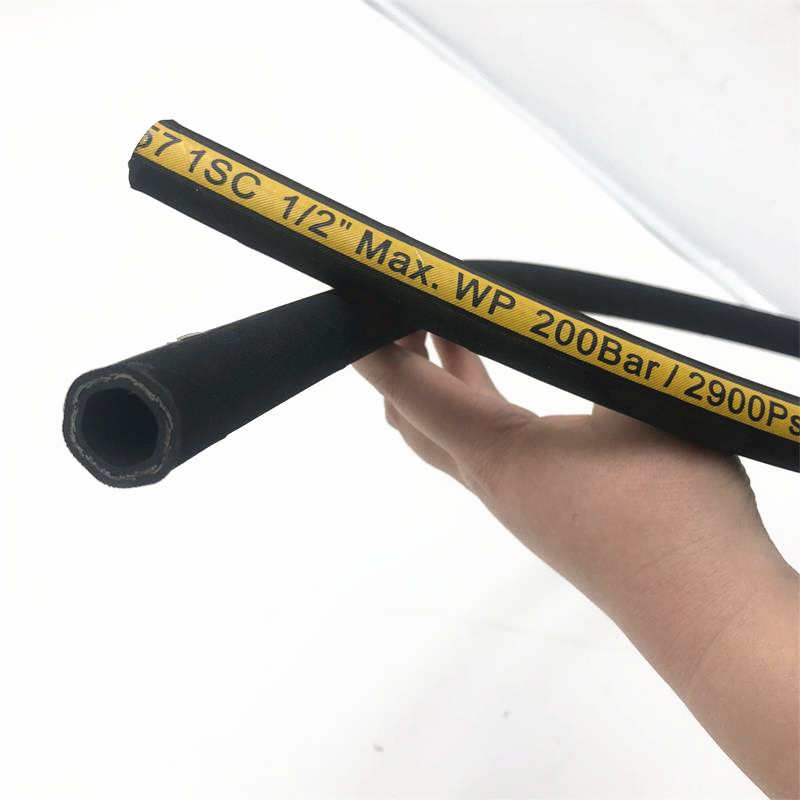335345435
Oct . 16, 2024 16:50 Back to list
Top Durable Pressure Washer Hoses for 3500 PSI Power Cleaning Tasks
The Essential Guide to Pressure Washer Hoses A Focus on 3500 PSI Models
Pressure washers are indispensable tools for anyone looking to tackle tough cleaning jobs with efficiency. When it comes to ensuring optimal performance, one critical component is the pressure washer hose. This article will delve into the specifics of pressure washer hoses, particularly focusing on those designed for 3500 PSI applications.
Understanding Pressure Washer Hoses
A pressure washer hose serves as the link between the pressure washer and the cleaning solution. Its main function is to withstand high-pressure water flow while delivering it effectively to the cleaning surface. The quality and specifications of the hose can greatly influence the overall cleaning results and the longevity of your pressure washer.
Why 3500 PSI?
When selecting a pressure washer hose, pressure rating is one of the key factors to consider. Hoses designed for 3500 PSI provide a powerful cleaning ability, making them suitable for heavy-duty tasks such as stripping paint, cleaning concrete surfaces, and blasting grime off machinery. These high-pressure hoses are essential for ensuring that the water retains enough power to remove stubborn dirt and stains without the need for excessive manual scrubbing.
Key Features of 3500 PSI Hoses
1. Material High-pressure hoses are typically made from durable materials such as PVC or rubber. Rubber hoses tend to be stronger and more flexible, reducing the risk of kinks and ensuring a longer lifespan. PVC hoses, while lighter, may not withstand the same level of pressure as rubber ones.
2. Diameter The diameter of the hose affects water flow and pressure. Most 3500 PSI hoses come in diameters ranging from 1/4 inch to 3/8 inch. A larger diameter allows for greater water flow, which can improve cleaning efficiency. However, compatibility with your pressure washer’s fittings is crucial.
pressure washer hose 3500 psi

3. Length Hose length can range from 25 to 100 feet or more. A longer hose offers greater reach, enabling you to clean wider areas without moving your pressure washer. However, longer hoses can sometimes lead to a decrease in pressure due to friction loss, so it’s essential to balance length with the required pressure.
4. Fittings Most hoses come with a variety of fittings, typically quick-connect couplers, which make it easy to attach and detach the hose from the pressure washer and other accessories. Ensure that the fittings are compatible with your equipment to avoid leaks.
5. Temperature Rating Some cleaning tasks require hot water. Hoses designed for higher temperature ratings can handle the heat without deteriorating, making them suitable for tasks like degreasing.
Maintenance Tips
To maximize the longevity of your pressure washer hose, follow these maintenance tips
- Store Properly Always coil the hose loosely after use and store it in a cool, dry place. Avoid bending or kinking the hose, which could damage it. - Inspect Regularly Check for cracks, leaks, or abrasions before each use. A damaged hose can reduce pressure, lead to leaks, and pose safety hazards. - Use the Right Tools Avoid using tools or attachments that exceed the hose’s PSI rating. This can prevent excessive wear and tear, maintaining the integrity of the hose.
Conclusion
Choosing the right pressure washer hose, especially one rated at 3500 PSI, can significantly impact your cleaning efficiency and effectiveness. Understanding the features and specifications of the hose, as well as practicing proper maintenance, will ensure that your pressure washer operates at its best for years to come. Whether you are a homeowner looking to maintain your property or a contractor handling various cleaning jobs, investing in a high-quality pressure washer hose is essential for achieving optimal results.
-
SAE 100 R17 Black Smooth Cover Hydraulic Hose
NewsMar.07,2025
-
SAE 100 R17 Black Smooth Cover Hydraulic Hose
NewsMar.07,2025
-
SAE 100 R17 Black Smooth Cover Hydraulic Hose
NewsMar.07,2025
-
SAE 100 R17 Black Smooth Cover Hydraulic Hose
NewsMar.07,2025
-
SAE 100 R17 Black Smooth Cover Hydraulic Hose
NewsMar.07,2025
-
steel wire braided hydraulic hose
NewsMar.07,2025



